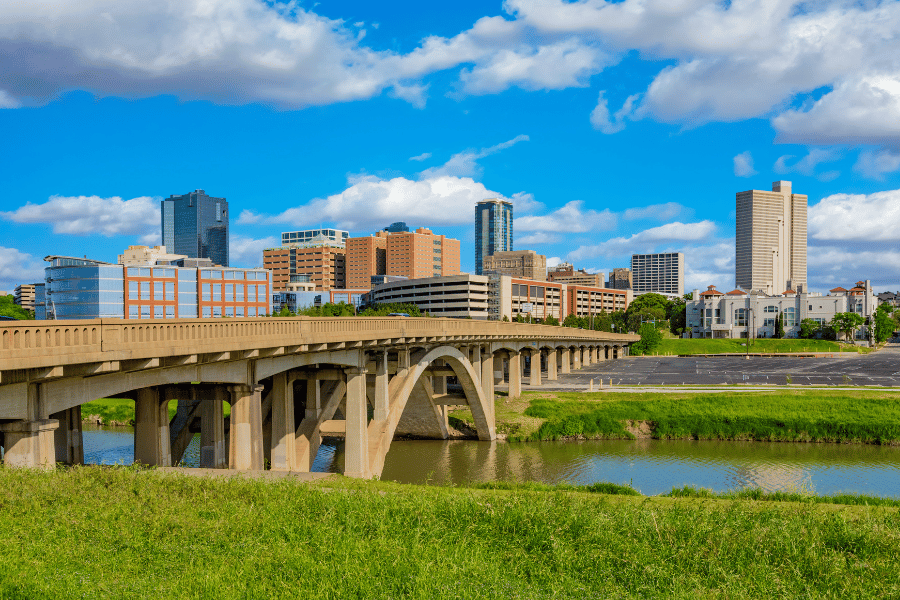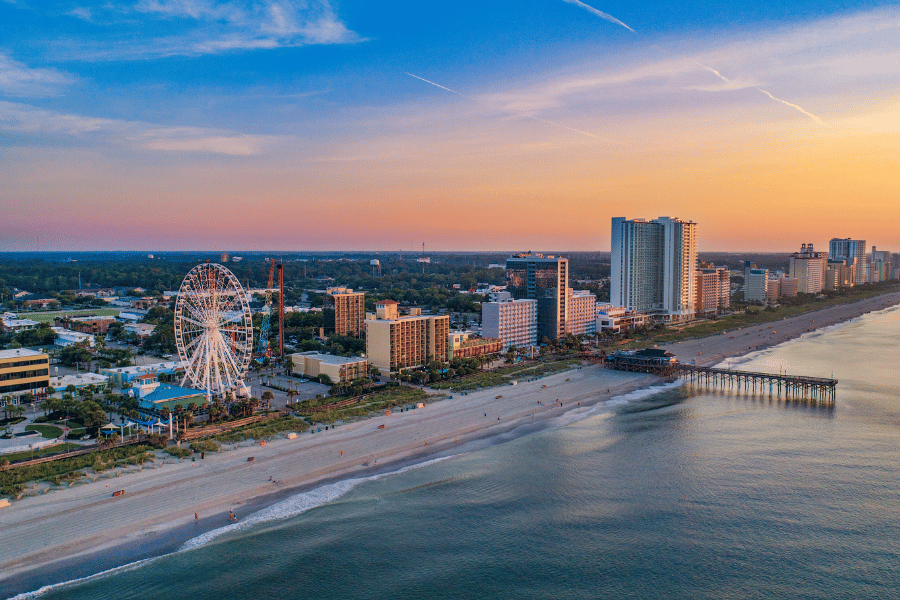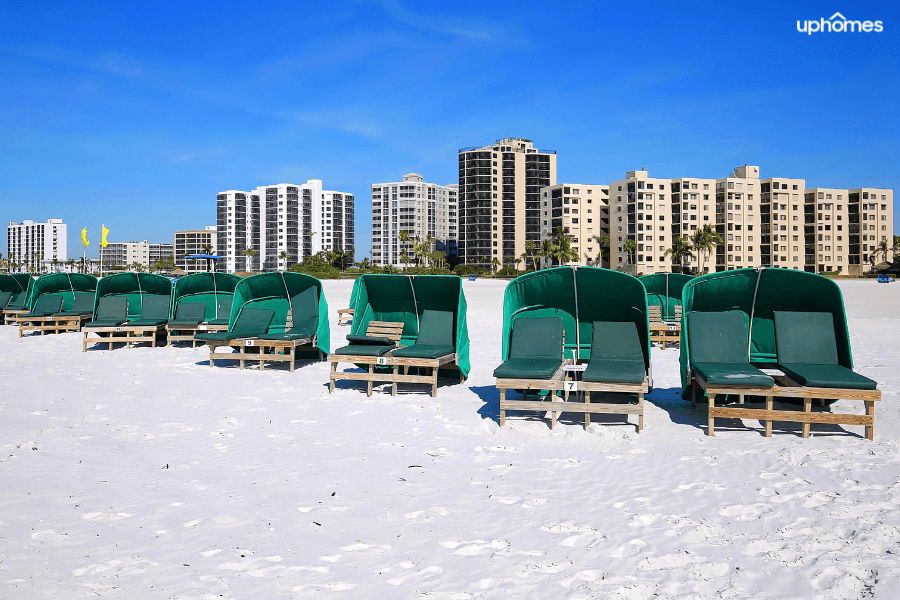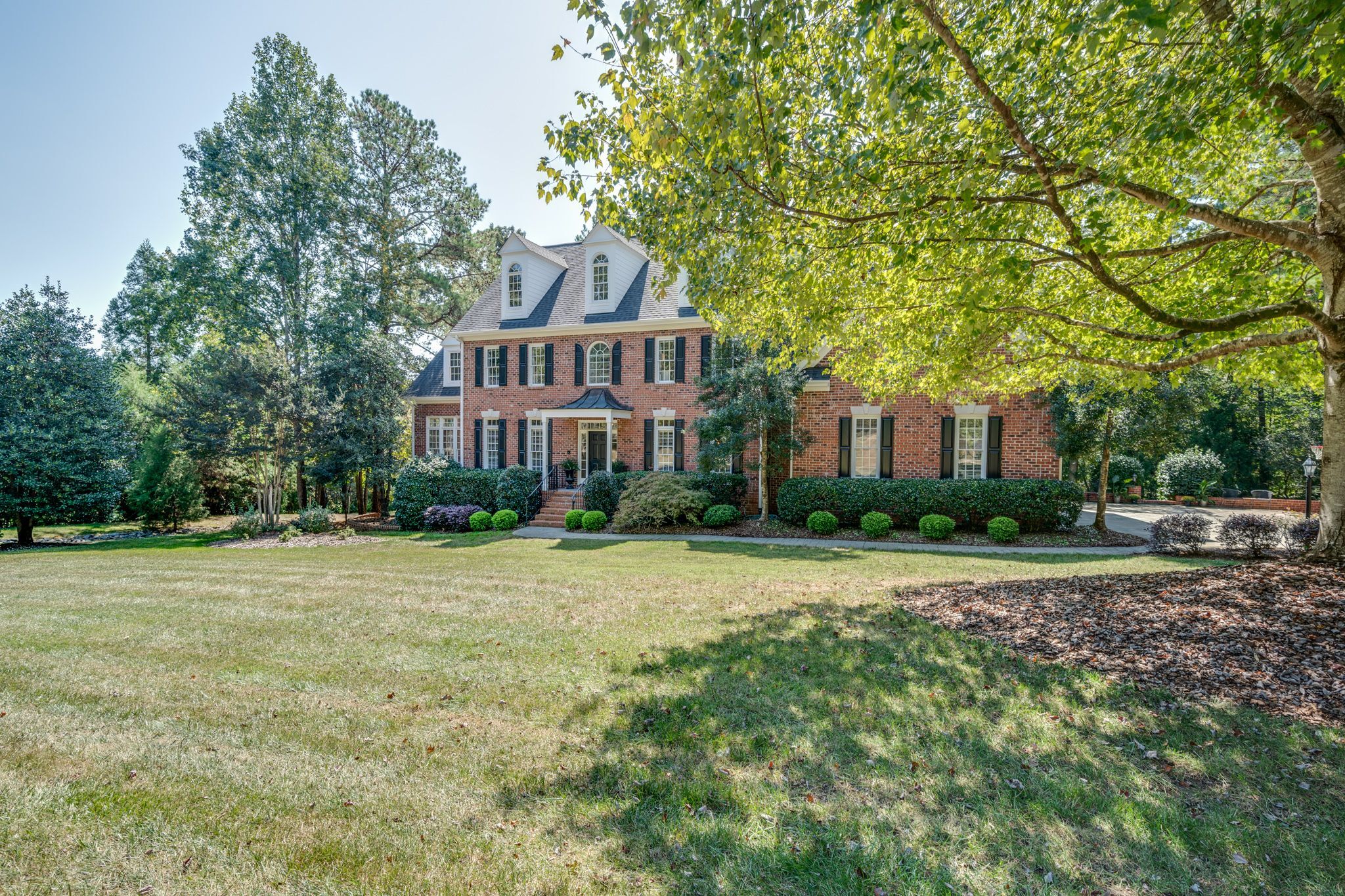15 Fastest-Growing Cities in the United States {2023 Data}
August 18th, 2023

The Fastest Growing Cities in the US {2023 Data}
The United States is a land of constant change, with cities and towns experiencing incredible growth and development. What makes a city grow and earn a spot on America’s fastest-growing cities? Is it attractive job opportunities, affordable housing, or perhaps the vibrant arts and culture? In this blog post, we will explore the factors contributing to the growth of the top 15 fastest-growing cities in the US and delve into the role of outdoor recreation, arts, and major industries in their expansion.
Beyond the metropolis, secondary cities are also making their mark, offering unique attractions and opportunities that contribute to the overall growth of their respective regions. Keep reading to discover the towns shaping America's future and learn how Census Bureau data and economic analysis play a crucial role in identifying and ranking these booming urban areas.
Short Summary
-
The US’s fastest-growing cities are primarily in the South and Southwest, with SC, TX, and FL growing rapidly.
-
Outdoor recreation is a significant factor in city growth due to its activities & climates. Vibrant arts scenes attract businesses & residents.
-
Census Bureau data and economic analysis help researchers analyze America’s growing cities. Secondary cities offer unique development opportunities.

Chapters
- Top 15 Fastest-Growing Cities in America by Population Increase
- Outdoor Recreation and Its Impact on City Growth
- The Importance of a Vibrant Arts Scene
- Median Household Income in Growing Cities
- Housing Developments and Population Growth
- Attracting Major Industries: Technology, Healthcare, and Finance
Top 15 Fastest-Growing Cities in America by Population Increase
The top 15 fastest-growing cities in the US have experienced exceptional growth in recent years, thanks to a combination of factors such as thriving economies, mild climates, and various entertainment options. Here are the 15 Fastest-Growing Cities in America by an increase in total population count in 2023.
| # | City | State | Numeric Increase | 2022 Total Population |
| 1. | Fort Worth | Texas | 19,170 | 956,709 |
| 2. | Phoenix | Arizona | 19,053 | 1,644,409 |
| 3. | San Antonio | Texas | 18,889 | 1,472,909 |
| 4. | Seattle | Washington | 17,749 | 749,256 |
| 5. | Charlotte | North Carolina | 15,217 | 897,720 |
| 6. | Jacksonville | Florida | 14,408 | 971,319 |
| 7. | Port St. Lucie | Florida | 13,887 | 231,790 |
| 8. | Cape Coral | Florida | 13,017 | 216,992 |
| 9. | Houston | Texas | 11,223 | 2,302,878 |
| 10. | Georgetown | Texas | 10,887 | 86,507 |
| 11. | North Las Vegas | Nevada | 9,419 | 280,543 |
| 12. | Henderson | Nevada | 8,994 | 331,415 |
| 13. | Dallas | Texas | 8,833 | 1,299,544 |
| 14. | Irvine | California | 8,589 | 313,685 |
| 15. | Frisco | Texas | 8,506 | 219,587 |
The South and Southwest regions, particularly, are demonstrating the most notable population growth, with metro areas expanding incredibly. Some of these cities include:
-
Austin-Round Rock-Georgetown, TX Metro Area
-
Orlando-Kissimmee-Sanford, FL Metro Area
-
Charleston-North Charleston, SC Metro
-
Houston-The Woodlands-Sugar Land, TX Metro
Proximity also plays a crucial role in the growth of cities, as growing cities located close to one another can form a metropolitan area, such as North Carolina's Research Triangle, which includes the largest city in the region. These thriving urban centers are attracting new residents and businesses, contributing to their overall growth and development.
South Carolina's Rapid Growth
South Carolina’s rapid growth can be attributed to its small-town charm, beachy atmosphere, and esteemed reputation as a culinary and cultural hub. Charleston and Myrtle Beach, in particular, are experiencing significant growth thanks to its small-town atmosphere, beachy vibe, and vibrant arts scene that draws tourists worldwide. The year-round warm weather is another factor that attracts people to cities like Charleston and Myrtle Beach.
The economic polarization in Greater Charleston demonstrates that most of the highest income brackets fall within either those under $15K or those between $75 to 150K, with fewer individuals within the middle-income ranges. The median household income in Charleston-North Charleston, South Carolina, is reported to be $65,894.

The Rise of Texas Cities
Texas cities have seen significant growth due to their robust economies, the presence of major corporations, and a variety of entertainment options. With the third-highest population growth rate, Texas is witnessing rapid expansion in cities such as Dallas-Fort Worth, San Antonio, and Austin. For instance, the percentage growth of Dallas-Fort Worth is 16.58%, with a metropolitan population of 7451,858, including the neighboring Texas City of Dallas Fort Worth Arlington.
However, some potential drawbacks of living in cities like Houston include:
-
Sweltering summer temperatures
-
High humidity
-
Potential hurricanes
-
Extended commute times
Despite these challenges, strong economies and diverse entertainment options continue to attract new residents to Texas cities, contributing to their exceptional growth.
Florida's Metro Area Expansion
Florida’s metro areas, such as Orlando-Kissimmee-Sanford and North Port-Sarasota-Bradenton, are expanding rapidly due to their warm climate, recreational options, and growing economies. The population growth rate of Orlando, Florida, for example, is 19.69%. The city is a renowned international tourist destination. Its world-famous theme parks, such as Walt Disney World, Universal Studios Orlando, Epcot Center, and Sea World, attract millions of visitors annually.
In addition to tourism, the Dr. Phillips Center for the Performing Arts and the Orange County Convention Center contribute to the city’s economic growth, hosting hundreds of events and drawing more than a million attendees for over 200 events. The availability of buildable land and affordable housing options also plays a crucial role in expanding Florida’s metro areas, providing room for growth and attracting new residents.

Outdoor Recreation and Its Impact on City Growth
Providing ample outdoor recreation opportunities significantly attracts new inhabitants and visitors, thus contributing to city expansion. Cities such as Charlotte, North Carolina, and Cary, North Carolina, offer year-round professional sports and outdoor recreation, drawing residents and tourists alike. Similarly, the mild desert climate in St. George, Utah, brings minimal precipitation, hot summers, and mild winters, making it an attractive destination for outdoor enthusiasts.
Cities that offer a wide range of outdoor activities, such as golf, hiking, and access to national parks, often experience a rise in population as they become sought-after destinations for residents and tourists. This increase in population, in turn, contributes to these cities' overall growth and development.
The Importance of a Vibrant Arts Scene
A lively arts scene is essential in drawing in new inhabitants and businesses to burgeoning cities, thus contributing to their overall development and growth. Cities with a vibrant arts scene, such as Charleston, South Carolina, and Chandler, Arizona, foster a sense of community, potentially drawing in new businesses and increasing economic growth and development.
For example, the Spoleto Festival in Charleston is a 17-day celebration of music and performing arts held annually in the spring, attracting visitors from around the world. Similarly, Chandler, Arizona, offers several unique museums, including the Arizona Railway Museum and the Musical Instrument Museum, contributing to the city’s cultural appeal.
A vibrant arts scene can, therefore, be a significant contributor to the growth and development of cities and has the potential to draw new residents and businesses.
Median Household Income in Growing Cities
The median household income in growing cities can provide insights into their economic prosperity and potential for population growth. For example, the median household income in Austin, Texas, is $80,852, while in Dallas-Fort Worth, it is $72,882. These figures indicate a strong correlation between economic prosperity and population growth, as cities with higher median household incomes tend to experience more incredible population growth.
On the other hand, cities with lower median household incomes, such as Las Vegas-Henderson-Paradise, Nevada ($61,048), North Las Vegas, and Orlando, Florida ($61,229), may face challenges in attracting new residents and businesses, potentially limiting their growth potential.
Analyzing median household income data can provide valuable insights into a city's growth potential and its ability to attract new residents and businesses.
Housing Developments and Population Growth
Housing developments can substantially influence population growth, as new housing can draw people to move to a region, resulting in a population increase. Conversely, an absence of housing can restrict population growth. The availability of buildable land and affordable housing options can significantly influence population growth, as areas with more buildable land and affordable housing options tend to experience an increase in population.
However, housing developments can also result in urban sprawl and the conversion of rural land, which could have various environmental and social implications. Cities and planners must carefully balance housing development needs with other concerns to ensure sustainable growth and development.
Attracting Major Industries: Technology, Healthcare, and Finance
Growing cities attract significant industries such as technology, healthcare, and finance, contributing to their economic growth and job opportunities. For example, the Research Triangle Park in Cary, North Carolina, is the largest in North America and has more than 50,000 jobs, playing a significant role in the city’s growth. Similarly, San Antonio, Texas, and San Jose are home to major industries such as tourism, healthcare, manufacturing, and services.
Denver, Colorado, is another example of a city that has attracted major corporations in industries such as:
-
food and beverages
-
aviation and aerospace
-
software
-
healthcare and wellness
The presence of major industries in these cities not only boosts their economies but also creates job opportunities, attracting new residents and businesses and contributing to their overall growth and development.
The Role of Census Bureau Data and Economic Analysis
Census Bureau data and economic analysis play a vital role in determining and ranking the fastest-growing cities in the US. Researchers can identify and rank America’s biggest boomtowns by examining several variables. These include:
-
Population growth
-
GDP growth
-
Unemployment rate
-
Workforce growth
-
Poverty rate
-
Housing unit growth
-
Real personal income growth
-
Change in median age
-
Change in the total number of businesses
-
Percentage of full-time workers making over $100,000
The data used to rank America’s biggest boomtowns is sourced from the US Census Bureau and the Bureau of Economic Analysis, ensuring accurate and reliable information for analysis and comparison. Understanding the factors that contribute to the growth of cities can help urban planners, policymakers, and residents make informed decisions about the future development of their communities.
Secondary Cities: Growth Beyond the Metropolis
Secondary cities, such as San Marcos, Texas, and Mesa, Arizona, are experiencing growth beyond the metropolis, offering unique attractions and opportunities that contribute to the overall development of their respective regions. These sizable and developing suburbs and suburbs are extending or contending with their principal cities and could be recognized as “secondary cities” within the individual metropolitan areas.
The growth of secondary cities highlights the importance of considering the major metropolitan areas and the surrounding communities that contribute to a region's overall growth and development. These secondary cities offer unique opportunities for residents, businesses, and visitors and can play a crucial role in the future growth of their respective regions.
Five Emerging Fast-Growing Cities to Watch

As we explore the landscape of America’s fastest-growing cities, it’s worth keeping an eye on five emerging fast-growing cities.
-
Fort Myers, Florida
-
St. George, Utah
-
Cape Coral, Florida
-
Round Rock, Texas
-
Myrtle Beach, South Carolina
Each of these cities has shown potential for growth in recent years, thanks to a combination of factors such as population growth, job opportunities, and infrastructure development, setting them apart from other cities.
By examining the growth of these emerging cities, we can glean insights into the factors that contribute to their success and potential for further development shortly. As we look to the future, it's essential to recognize the potential of these emerging cities and the opportunities they offer for residents, businesses, and visitors alike.
Summary
Throughout this blog post, we have explored the factors contributing to the growth of the top 20 fastest-growing cities in the US, delving into the role of outdoor recreation, arts, and major industries in their expansion. We have also examined the relationship between housing developments and population growth and the crucial role of Census Bureau data and economic analysis in identifying and ranking these booming urban areas.
As we look to the future, we must recognize the potential of emerging fast-growing cities and their opportunities for residents, businesses, and visitors. By understanding the factors that contribute to city growth, we can work together to create vibrant, thriving communities that provide economic prosperity, cultural enrichment, and an exceptional quality of life for all who call them home.
Frequently Asked Questions
What are the top 5 fastest growing cities in the United States?
The five fastest-growing cities in the United States are Conroe, Texas; McKinney, Texas; Frisco, Texas; Greenville, South Carolina; and Bend, Oregon.
All of these cities have experienced rapid population growth in recent years.
What is the fastest-growing city in the US?
According to data released by the U.S. Census Bureau, Georgetown, Texas, is the fastest-growing city in the U.S.. It grew 14.4 percent between July 1, 2021, and July 1, 2022, adding nearly 11,000 people. By percentage increase, that makes Georgetown #1 on the list.
Which city has the fastest-growing population?
Georgetown, Texas, has the fastest-growing population, with its growth rate in 2022 at 14.4%, the highest among all cities and towns with at least 50,000 people.
This is an impressive statistic, and it speaks to the city’s potential for continued growth in the future.
What factors contribute to the growth of the fastest-growing cities in the US?
Thriving economies, mild climates, and a variety of entertainment options are all factors that contribute to the growth of the fastest-growing cities in the US.
These cities attract people looking for a new place to live, work, and play. They offer many job opportunities, affordable housing, and activities to entertain residents.
The cities that are experiencing the most are the cities that are experiencing the most.
How does outdoor recreation impact city growth?
Outdoor recreation attracts more people to cities, driving economic growth and providing new opportunities for city development.
This influx of people can increase demand for housing, retail, and other services. It can also create new jobs and stimulate the local economy. Additionally, outdoor recreation can help.

Ryan Fitzgerald
Hi there! Nice to 'meet' you and thanks for visiting our Raleigh Real Estate Blog! My name is Ryan Fitzgerald, and I'm a REALTOR® in Raleigh-Durham, NC, the owner of Raleigh Realty. I work alongside some of the best Realtors in Raleigh. You can find more of my real estate content on Forbes, Wall Street Journal, U.S. News and more. Realtor Magazine named me a top 30 under 30 Realtor in the country (it was a long time ago haha). Any way, that's enough about me. I'd love to learn more about you if you'd like to connect with me on Facebook and Instagram or connect with our team at Raleigh Realty. Looking forward to connecting!

